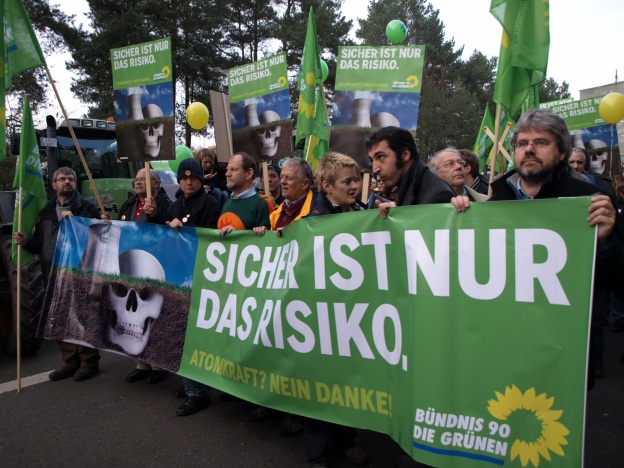The word “Gorleben” brings up some negative images in the minds of many Germans. It’s the name of a municipality in Lower Saxony and the site of a controversial nuclear waste disposal facility located there, currently used as an intermediate storage facility but intended to become permanent. For more than 30 years, nuclear energy opponents have been trying to stop the site from being turned into a deep geological repository. And now it looks like they will be getting their way, with Germany’s federal and state governments agreeing on draft a new law to regulate the search for a final repository.
While only a portion of Germany’s radioactive waste is currently temporarily stored away in Gorleben, the situation in neighboring countries does not look much better. Meanwhile, pressure is increasing around the world to find a permanent solution, but according to geologist Stefan Alt from the Institute for Applied Ecology in Darmstadt “it will still be at least another 20 years before this happens, optimistically speaking.”
Nevertheless, the EU has called on its member states to draw up plans by 2015 outlining how and where they are planning to store nuclear waste. The search for suitable sites is becoming frantic, but in some countries it is even more difficult than in others.
“While Germany has salt, granite and clay deposits that nuclear waste can be stored in, the options in countries like France and Switzerland are more limited,” said Alt. He added that France has been searching nearly exclusively for clay soil and has apparently managed to find something suitable. In the village of Bure in eastern France, close to the German border, the government is examining the rock layers with the help of an underground laboratory, with a view to creating a permanent repository there by 2025., Unlike in Germany, there is no major public resistance against the project. “In France there hasn’t traditionally been any large anti-nuclear movement,” said Alt. “However, people who live in the direct vicinity of the repository site see the situation a bit differently, of course.”
In Switzerland, public discussion on the matter has been lively. “The more precise the suggestion for a location, the more heated the debate becomes,” said Alt. Since 2008, six potential sites have beenpinpointed in the country. Germany has been allowed to provide its input in regards to those located near the German border. A referendum on the issue is being considered for 2019.
In Belgium, 55 percent of power is sourced from nuclear energy. “But Belgium is a very small country with few possibilities for permanent nuclear waste storage,” Alt said. “There is a research facility in the town of Mol, but the problem is that the clay deposits there are too small for a storage site.” The Netherlands faces a similar problem.
“The situation in the Czech Republic hasn’t been transparent for months,” There is also opposition in the country towards the government’s plans to create nuclear storage facilities Only the Nordic region has made significant progress in the search for permanent waste storage sites. In Finland, the first facility is already under construction on the island of Olkiluoto. “The acceptance level among the residents is a lot higher than in Germany and neighboring countries,” said Alt. “But this is not surprising because technological awareness is very high there and there is already a nuclear power plant on the island.”
Aside from that, nuclear energy attracts very different associations in Finland than in Germany…is seen as a source of affluence and jobs. Still, the construction of the Olkiluoto facility is facing some hurdles. Several investigations are being conducted that could potentially halt the process. At this stage it is also not clear when the facility could realistically begin operations. “A facility like this doesn’t appear overnight.”The Konrad temporary storage facility in Germany was only finished after 20 years, and the preceding considerations and planning took 30 to 40 years.
Excerpts, Christian Ignatzi, NUCLEAR POWER: Europe searches for nuclear waste storage sites, Deutsche Welle, Apr. 14, 2014




